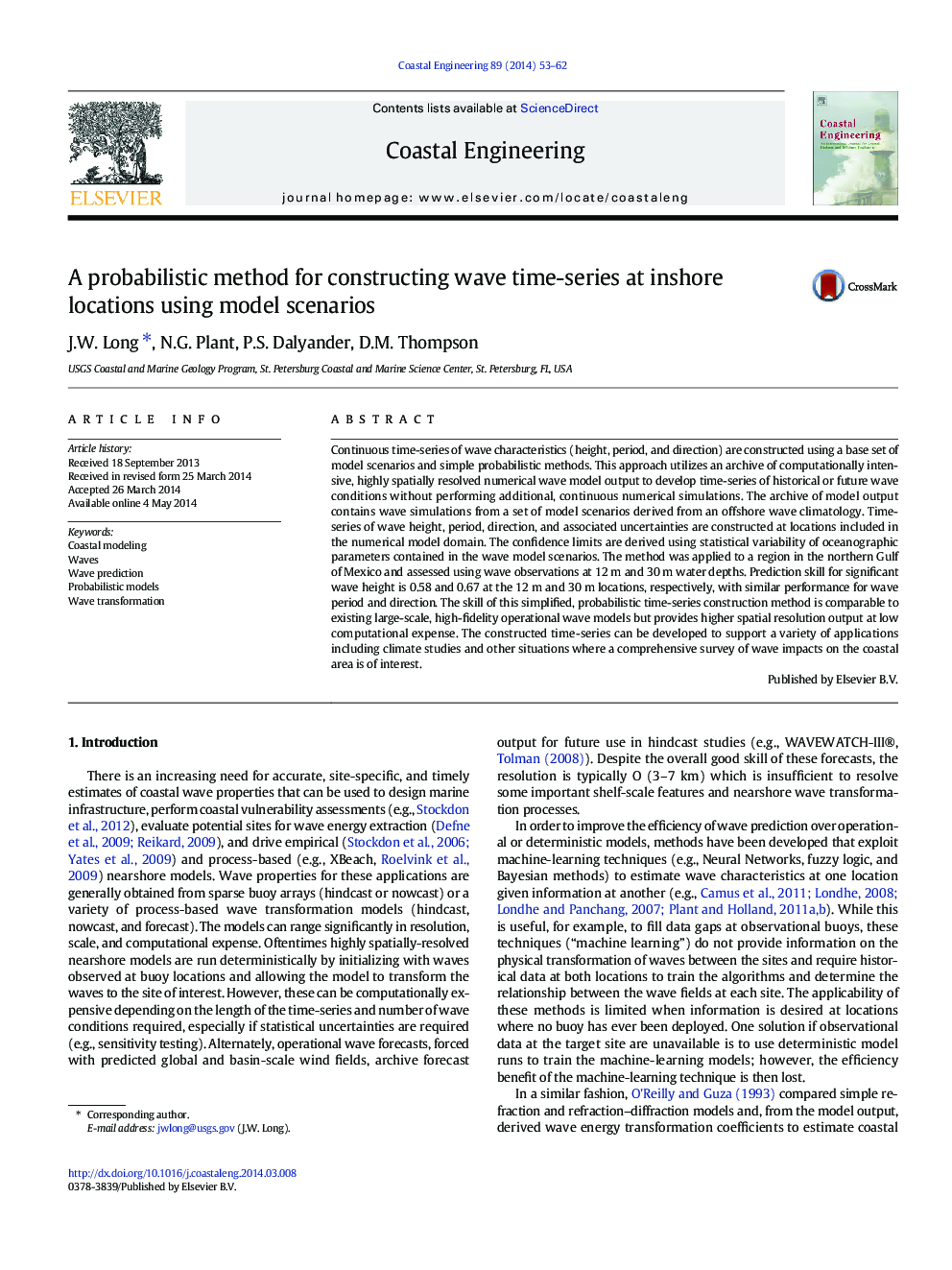| Article ID | Journal | Published Year | Pages | File Type |
|---|---|---|---|---|
| 1720788 | Coastal Engineering | 2014 | 10 Pages |
•Efficient method to construct shallow-water time series of bulk wave parameters.•Method is applicable to wave hindcasts or scenario-based conditions.•Skill is similar to high-fidelity process-based wave models.•Increased efficiency for probabilistic prediction of waves over large regions.
Continuous time-series of wave characteristics (height, period, and direction) are constructed using a base set of model scenarios and simple probabilistic methods. This approach utilizes an archive of computationally intensive, highly spatially resolved numerical wave model output to develop time-series of historical or future wave conditions without performing additional, continuous numerical simulations. The archive of model output contains wave simulations from a set of model scenarios derived from an offshore wave climatology. Time-series of wave height, period, direction, and associated uncertainties are constructed at locations included in the numerical model domain. The confidence limits are derived using statistical variability of oceanographic parameters contained in the wave model scenarios. The method was applied to a region in the northern Gulf of Mexico and assessed using wave observations at 12 m and 30 m water depths. Prediction skill for significant wave height is 0.58 and 0.67 at the 12 m and 30 m locations, respectively, with similar performance for wave period and direction. The skill of this simplified, probabilistic time-series construction method is comparable to existing large-scale, high-fidelity operational wave models but provides higher spatial resolution output at low computational expense. The constructed time-series can be developed to support a variety of applications including climate studies and other situations where a comprehensive survey of wave impacts on the coastal area is of interest.
